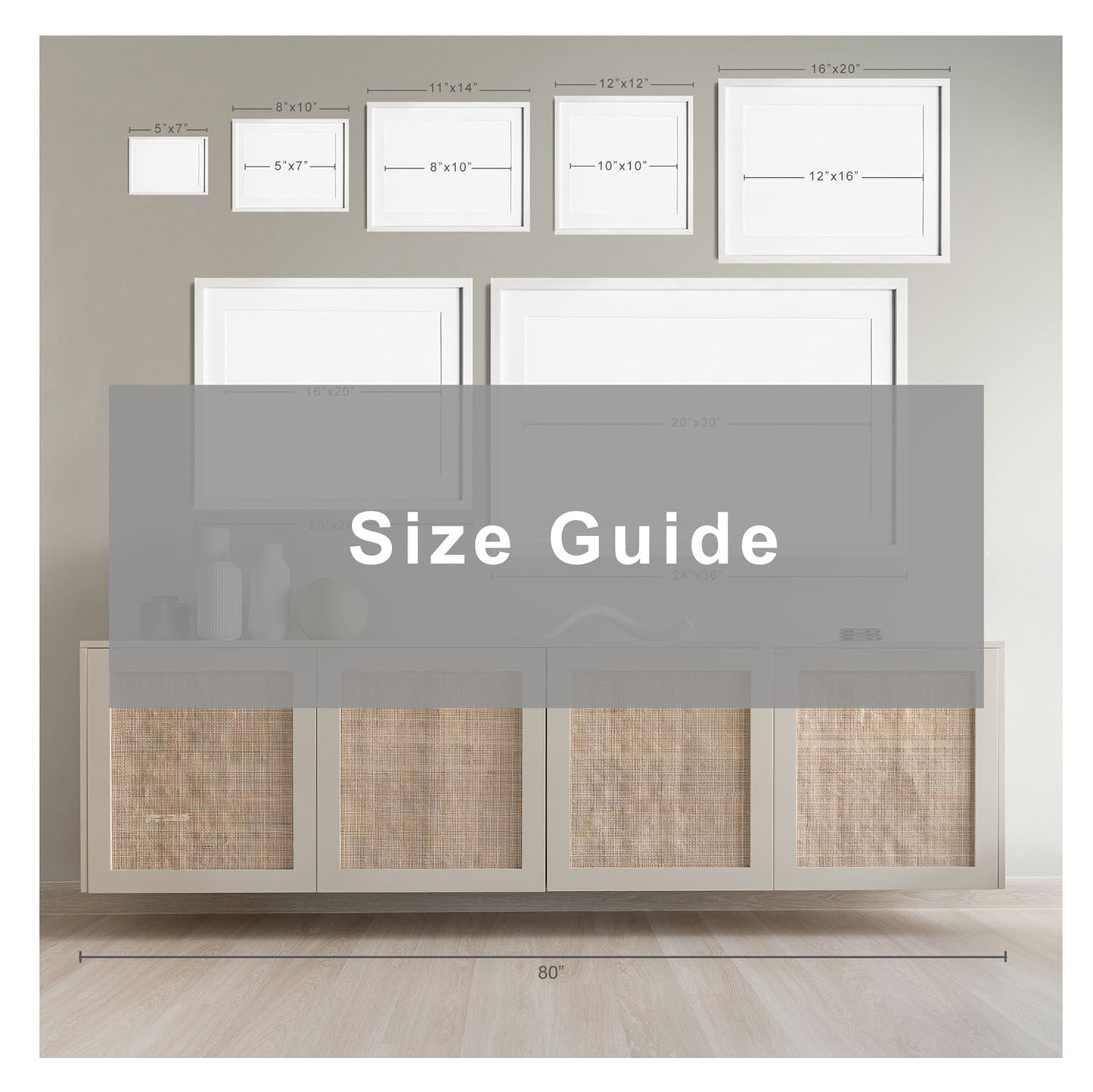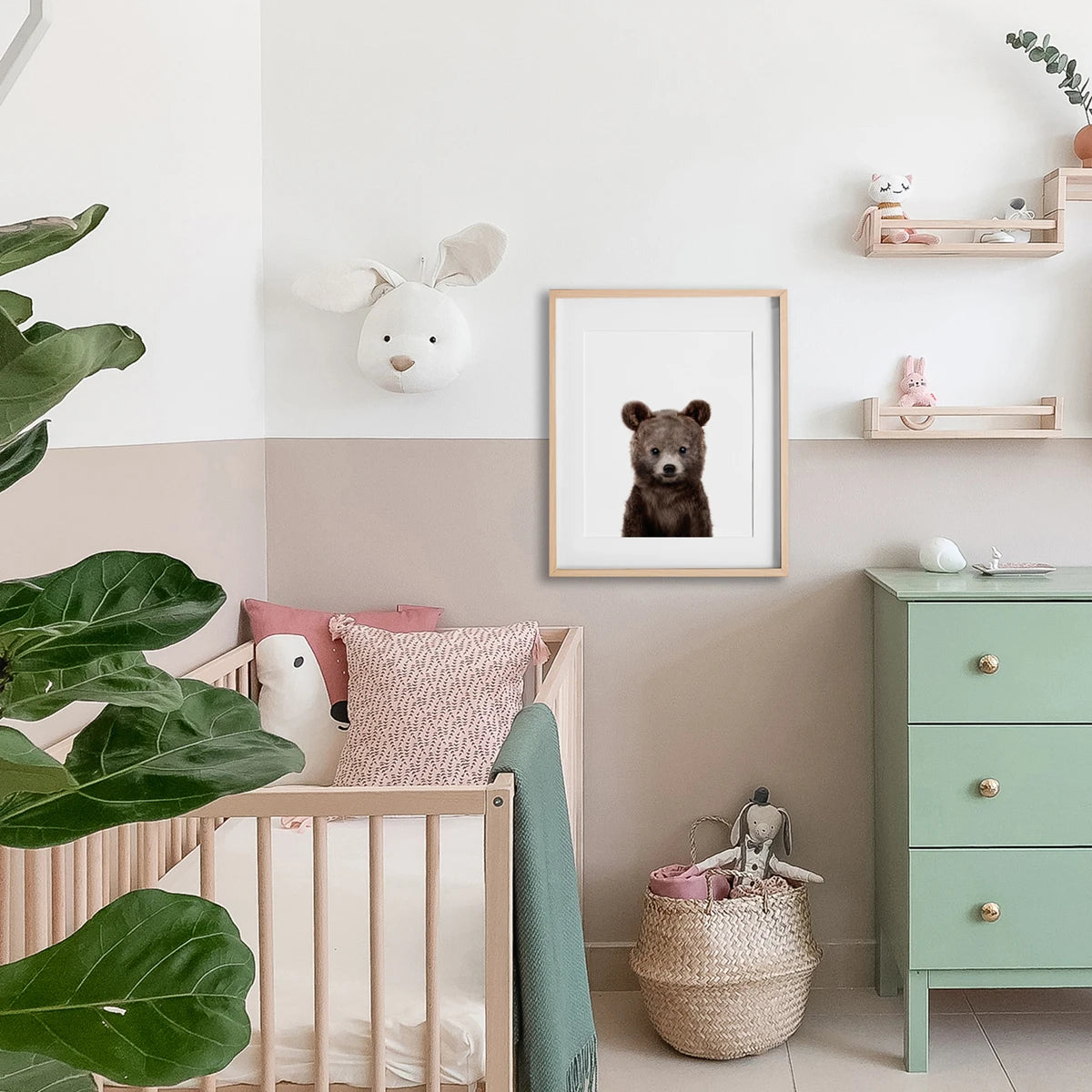
Ultimate Wall Art Size Guide: How to Choose the Perfect Art for Your Space
Welcome to the world of wall art! Have you ever walked into a room and noticed how a piece of wall art just felt right? It's almost like it was made for that spot! Well, guess what? Choosing the right wall art size is not just important. It's crucial, and I'm here to empower you with the knowledge of why in the simplest way possible.
Imagine you have a small room, and you put a huge piece of art on the wall. It's gonna feel like the room shrank, right? Or, if you have a big, spacious room and hang a teeny tiny painting, it might look lost, like a single sprinkle on a big cupcake. That's because the size of the art you choose can really change the vibe of your room. It's kind of like Goldilocks finding the bed that was just right - not too big, not too small.
In the field of interior design, wall art plays a crucial role in transforming a house into a home by serving as an emotional anchor. However, the impact of wall art is subjective and depends on factors such as space, personal style, and the story behind it. When selecting the perfect size for your living room, bedroom, or office space, it's essential to consider your personal preference and budget for different types of wall art, such as originals, limited editions, photography, or prints. To help you elevate your home decor game, I have created a wall art sizing guide that includes expert tips and techniques.
Understanding Your Wall Dimensions for Perfect Room Decoration
Let's discuss an important aspect of room decoration - understanding the dimensions of your walls. It's similar to being a detective in your own home. Start by measuring the height and width of your walls. This will help you visualize how different sizes of art will appear in your space. Knowing your wall dimensions can be a game-changer for decorating your room. Trust me, it is the secret ingredient to making your space uniquely yours. When I began measuring my walls, I felt like I was on a treasure hunt. Additionally, consider the style and theme of your artwork, ensuring it complements your existing decor.
The Golden Rules of Wall Art
1. Selecting the Appropriate Size:
When selecting artwork to hang above furniture, following some general guidelines is beneficial. For a single piece, aim for a width between 57% and 75% of the furniture's width. This proportion creates a visually appealing balance in the room.
Whether you're decorating a dining area or positioning art above a sofa, the width of the artwork plays a crucial role in the room's aesthetic. Consider artwork that spans approximately two-thirds of the furniture's width for a striking and impactful visual effect.
In spaces like hallways or staircases, vertical pieces that complement the height of the area can create a sense of flow and continuity.
For instance, if your sofa measures 90 inches in width, the recommended width for the artwork would be between 51 and 67 inches. This calculation can be determined by dividing the sofa width by 57% and 75%
90 × 0.57 = 51.3 inches
90 × 0.75 = 67.5 inches
This method ensures the artwork is proportionate and visually harmonious with the furniture below.

The recommended artwork size for a queen-sized bed is between 34 and 45 inches in width.
2. Eye-Level Rule:
Position your artwork at eye level, typically between 57 to 60 inches from the floor, offering optimal viewing, whether standing or seated. In rooms with ceilings under 8 feet, divide the wall into four equal sections horizontally and hang artwork in the third section from the bottom, creating a sense of spaciousness.
When arranging multiple pieces with varying heights, align their middles for a cohesive and balanced appearance.
For staircases, consider hanging artwork every third step to achieve a dynamic diagonal effect, adding visual interest to your staircase.

Galleries typically hang paintings at a height ranging from 57 to 60 inches from the floor to the center of the artwork. Placing artwork at this height encourages a more intimate and immersive viewing experience, enhancing the connection between the viewer and the piece.
3. Above Furniture:
When hanging art above furniture such as sofas or beds, it's important to maintain balance to achieve an aesthetically pleasing look. To create a visually harmonious arrangement that enhances the room's decor, aim to leave a spacing of 6 to 8 inches between the top of the furniture and the bottom of the artwork. This spacing ensures that the art is properly showcased without overwhelming the furniture, allowing each element to complement the other in a cohesive design.

4. Deciding Between Gallery Wall vs. Statement Piece
Deciding between a gallery wall or a single piece of artwork can significantly influence your space's visual impact. A gallery wall adds depth and personality, showcasing a diverse range of artwork. Conversely, a single piece makes a bold statement, drawing focus to a particular piece. Consider your style, space size, and desired ambiance when choosing. Both options offer opportunities to express creativity and enhance your home's aesthetic appeal.
Determine what you want the focal point of your wall to be, and how you want to arrange your artwork. If you want to create a gallery wall, it's recommended to use smaller pieces that can cover the same amount of space as a larger, single piece. Divide your wall into sections and decide whether you want one large piece or several smaller ones. Don't forget to consider the available space as well. These guidelines for measurement apply regardless of your preference.Space pieces 2-4” apart. And, be sure to take those spaces into account when calculating the total width!
5. Pick a Focal Point
When selecting art for your space, it's crucial to carefully choose a focal point that not only captures attention but also establishes the ambiance for the entire room. This pivotal piece, whether it's an eye-catching painting, a thought-provoking sculpture, or a well-curated gallery wall centered around a specific theme, acts as the cornerstone that harmonizes the space. It not only serves as a visual focal point that naturally draws the gaze and initiates discussions but also infuses your decor with character and dimension. Opting for a focal point that resonates with your personal style and harmonizes with the overall aesthetic of the room enables you to craft a unified and welcoming environment that lingers in the memory long after.

6. Try before you buy
To ensure that you buy the right piece of art for your space, it's a valuable idea to take a few extra steps in the decision-making process. Begin by making a rough sketch of the item's size on your wall before making the purchase. This can be easily achieved using masking tape or sheets of paper to outline the dimensions. Once you have completed this step, take a moment to step back and carefully assess the sketch. You may even consider leaving it on your wall for a day or two to truly visualize how the art will complement your space. These additional actions will provide you with a clearer sense of the size and aesthetic impact of the artwork, aiding you in making an informed and satisfying choice.

7. Trust yourself
Sometimes, you'll just know when something looks perfect. Even though there aren't strict rules for it, trusting your intuition is essential in converting a space into something genuinely remarkable. Trusting your instincts and allowing your creativity to flow freely can make all the difference in creating an environment that is visually appealing and deeply satisfying.
Tips:
- When looking to purchase artwork, it's a great idea to consider buying from the same artist. Each artist has their own unique style that is reflected in their pieces. A bunch of tiny paintings or framed images will look great together.
- You have a variety of options when it comes to wall art, including popular sizes from 8x10 to 24x36 inches.
- If you have limited space, buy three pieces and arrange them vertically.
For expert guidance on framing art prints, please refer to our comprehensive guide.
Standard art sizes in inches
|
Small Wall Art Sizes |
Medium Wall Art Sizes |
Large Wall Art Sizes |
|
8″ x 10″ |
16″ x 16″ |
20″ x 28″ |
|
10″ x 10″ |
16″ x 20″ |
20″ x 30″ |
|
11″ x 14″ |
18″ x 24″ |
24" x 24" |
|
12″ x 12″ |
20″ x 20″ |
24″ x 36″ |
|
12″ x 16″ |
20″ x 24″ |
36″ x 48″ |
|
13" x 19" |
and up |

wall art size guide bedroom
Art size for twin bed 22-30” wide.
Art size for full bed 30-41” wide.
Art size for queen bed 34-45” wide.
Art size for king bed 43-57” wide.
wall art size guide for a living room and kitchen
Art size for 96” sofa, get 54-72” art.
Art size for 72” sofa, get 41-54” art.
Art size for 60” table, get 34-45” wide.
For art above a fireplace, match the width of the art to the width of the fireplace opening.
With these helpful guidelines in mind, choosing the ideal size for your wall art can transform into a stress-free process. Whether you aspire to make a striking statement or prefer a touch of understated sophistication, careful consideration of the correct proportions guarantees that your space mirrors your individual taste and personality. Enjoy the creative process of decorating your space with art that resonates with you!




